George Best, soccer’s tragic genius
In August 1983, the man who Pelé once toasted as the greatest player of all time hung up his boots forever after an erratic career marked by depression and alcoholism
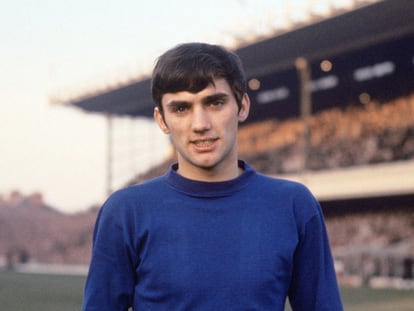
One August night 40 years ago, Shamrock Rovers, the newly-crowned Irish League champions, took to the field at the ramshackle home of Newry Town, a team struggling in the country’s third division. It might have seemed like just another summer friendly if it weren’t for the fact that Newry had a player who was about to appear in the last game of his career. And not just any player, but one who many considered to be the best player in history. It may not have been the most predictable scenario for an honorable farewell, but if one had to pick an adjective to define George Best, “predictable” would be well down the list.
Best turned up at Manchester United as a shy, skinny 15-year-old. Terrified by being away from home, within two days of arriving he took the ferry back to his working-class suburb in the east of Belfast. But he returned and the team welcomed him with open arms, knowing they had a one-of-a-kind player on their hands.
Light, lightning fast, with unparalleled flexibility and unmatched skill, Best swiftly found himself in Matt Busby’s starting XI, wearing the number 7 jersey that would make him a legend. Two years later, United traveled to Lisbon to face the team terrorizing the continent, Eusebio’s Benfica. Best put on a display that led to a resounding 1-5 scoreline. He would define it as “the match that changed everything.” Portuguese newspaper A Bola called him the “fifth Beatle” and Best was suddenly much more than just a footballer.
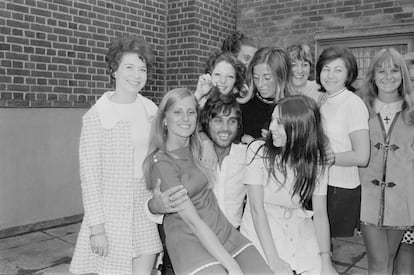
Best led United to league titles in 1965 and 1967 and won the 1968 Ballon d’Or. Every match seemed to become an exhibition of labyrinthine dribbles, dizzying changes of pace, impossibly angled goals. He was often given an ovation by rival fans. Only one objective seemed beyond reach: the European Cup. But in 1968, United reached the final, with Benfica again the opposition. Best scored the first goal in extra time as United won 4-1, sealing their most coveted title. At the final whistle, he felt a burst of happiness like he had never known before.
But it turned to emptiness when he reached the locker room and realized that he had no more to accomplish after just four years in the game. “It was one of the happiest days of my life. Also one of the most disappointing.” Writer Jackie Glass, his partner at the time, remembered him being “dry of any emotion” that night. Best decided to have a drink to wash away his unexpected restlessness.
What he could not have foreseen was that the next day, his life would become a nightmare. Thousands of letters flooded his home. The telephone rang 24 hours a day. He was forced to devise tricks to leave his house, besieged by fans. Manchester United also gave him to understand that he would be the one to lead the team from the following season. It was a difficult situation to handle for a 22-year-old, who was afflicted by a pathological shyness.
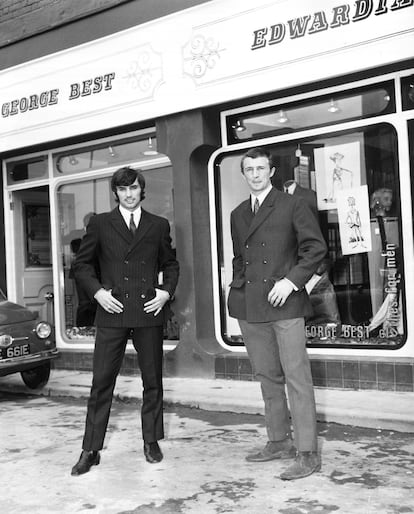
He began to have trouble sleeping and went out at night to avoid the anguish. And he began to find an ally in alcohol, which allowed him to move with ease in the local nightspots and approach the army of women who pursued him wherever he went. Singers, models, beauty queens... Years later, joking with some friends, he set out to list them. After more than a thousand names, they gave up out of sheer boredom.
Best thoroughly enjoyed that side of fame. But the other, of being persecuted at all hours, ended up building an insurmountable barrier. He dreamed of moving to the countryside, as The Beatles and the Rolling Stones had just done. But architect Frazer Crane crossed his path and convinced him that a modern man should live in a modern house.
Several months — and many thousands of pounds — later, he found that his house was indeed modern. Minimalist spaces, large windows, complex electronic systems to control the opening of the doors, the turning on of the lights, the television that descended from the ceiling. And Crane met Best’s two non-negotiable demands: a room to play billiards and a three-meter-long bathtub.
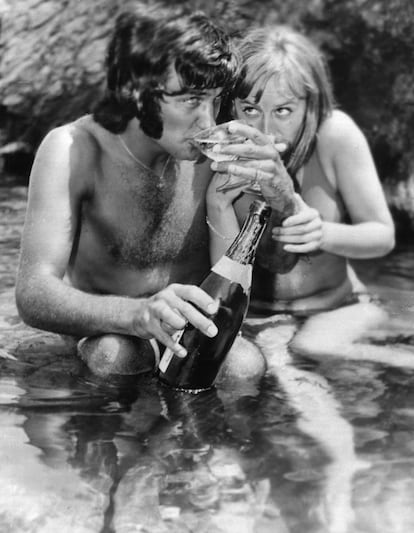
The most famous house in England
But the former was so small that it was impossible to handle the cue and the low water pressure made filling the basin take hours. On many occasions when the lights went on and off like a discotheque. The passing of any plane at low altitude would disable the electronic system — the house was located next to an airport. And Best had failed to leave the crowds behind: buses unloaded tourists at the gates of what had become the most famous house in England. Staff picnicked in the garden and people fishing for goldfish in his artificial lake.
That’s when Best lost control. He developed paranoid traits and showed symptoms of distress and exhaustion. The refuge of alcohol didn’t help to center him. Unable to manage a life that had long since ceased to be his own, he put in erratic performances and began to miss training sessions. Two days before his 26th birthday, he had a breakdown. The media ended up locating him in a hotel in Marbella. He told them that he had decided to stay away from soccer for fear that it would kill him. But he soon discovered that boredom was even more dangerous than the adrenaline of Manchester. At a time when mental health was not discussed, his extravagance was misunderstood and his relationship with his team and his fans broke down. At the end of the season, United informed him that they no longer required his services. Madame Tussauds immediately removed his wax figure and replaced it with another of Johan Cruyff.
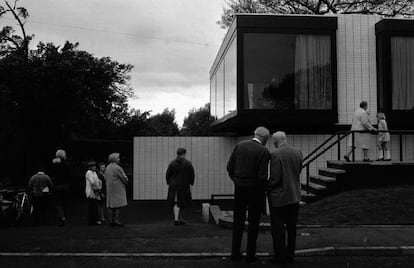
Being excluded from the team that had been his home since he was a teenager caused Best to lose his footing for good. That’s when he started drinking for real, when alcohol stopped being a diversion and became a self-destructive weapon. Parties no longer lasted days but weeks. He learned to make himself throw up so he could keep drinking when his body said enough, and blackouts began to take up more space than memories.
It was at this point that Best turned down an offer from Real Madrid and opted for a visceral response to his innermost need: to enjoy absolute anonymity, he moved to Canada. His next team was in World Indoor Football, a league of six-on-six matches on artificial turf. This though put him in the sights of the newly created North American Soccer League. Best thought he had found paradise there: undemanding competition, multimillion-dollar contracts, the possibility of living in California, where there were plenty of starlets on the trail of celebrities... But by then his anxiety had turned to depression and he was unable to enjoy anything, unconsciously focused on self-punishment. His team hosted the New York Cosmos at a banquet on the eve of a game. At dessert, their star player, Pelé, offered Best a toast, saluting him as the greatest player of all time. Best’s response was to go on a binge drinking spree and not return home until two weeks later.
Neither marriage, fatherhood, or the death of his mother, managed to rein him in. Best lived in an endless loop of drunkenness, fights, nights at the police station and even jail, where he spent Christmas in 1984 after assaulting an officer who had arrested him for drink-driving.

Occasionally the flame was rekindled. In 1976, he returned to the Northern Ireland national team because its next match was against Holland and this would allow him to confront the player who had taken over the throne of European soccer: Cruyff. When he received his first pass, he crossed the entire field to find Cruyff and went past him, celebrating by raising his fist in the air. In 1981, he scored what many consider the best goal of his career in a San Jose Earthquakes shirt, taking out seven defenders and pulling off a spectacular triple dribble in just an inch of space. But they were just that — flashes of brilliance from a player who had long since ceased to be a genuine one.
Best played for a few sides in the United States with some success but an endless pilgrimage ensued in which he accepted contracts for seasons, months or even matches, taking him, among others, to Ireland, Scotland, South Africa, New Zealand, Hong Kong, and the English fourth division. And so it was that in August 1983, 40 years ago, he said goodbye to soccer at the desolate Newry ground.
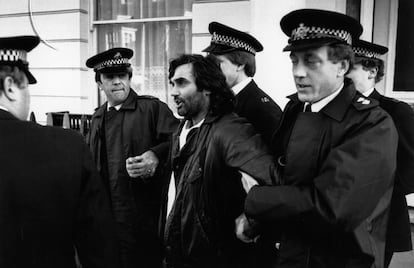
Best’s final years were beset by failing health: he was on the verge of death when, during a liver transplant, doctors discovered that alcohol had liquefied his blood so much that it was unable to clot. He worked as a commentator, wrote four autobiographies, and held meetings with fans where he gave free rein to his acid irony and one-liners that definitively forged his legend. His most famous, undoubtedly, was: “I spent a lot of money on booze, birds and fast cars — the rest I just squandered.”
But Best was far from a parody of himself. On the contrary, he decided to continue drinking until the end, consciously and with the dignity of someone who never expressed a single complaint; of someone who never blamed anyone for it, of someone who assumed all the consequences of his actions, who was able to apologize to everyone he had hurt and to thank those who had tried to help him. In 2005, knowing that he could no longer avoid death, he decided that his obligation was to give one last message to the world: he allowed himself to be photographed in an atrocious image that showed him folded up in bed, from which he could no longer move, chained to the machines that allowed him to breathe and with a body reduced to barely 40 kilograms. His final words were: “Do not die like me.”
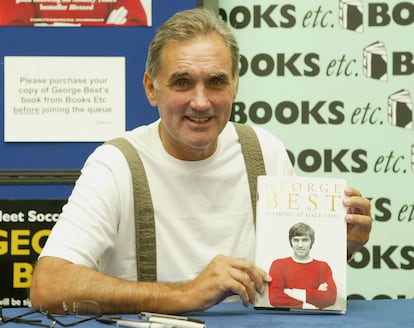
Sign up for our weekly newsletter to get more English-language news coverage from EL PAÍS USA Edition









































